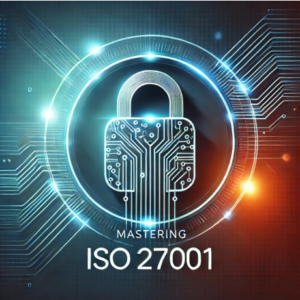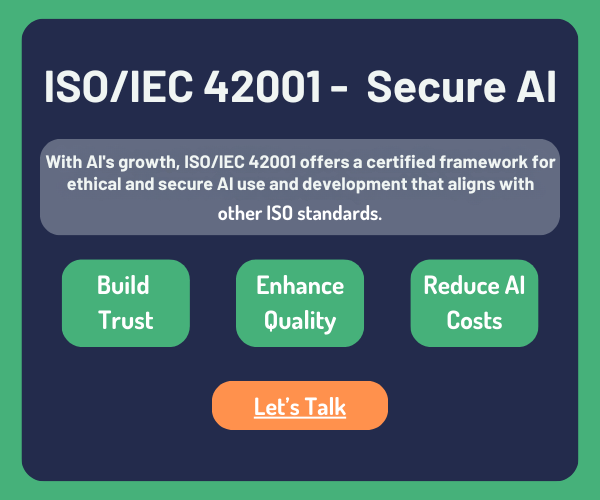In this article
How to Conduct an ISO 42001 AI Risk Assessment
- Ben Ben Aderet

Explore a Strategic Guide to Identifying, Evaluating, and Mitigating AI-Specific Risks in Alignment with ISO 42001
AI risk isn’t like traditional IT or security risk. It evolves as data changes, models adapt, and use cases scale. That’s why AI-specific risk assessments are foundational to ISO 42001—and essential for any organization committed to building trustworthy, ethical, and compliant AI systems.
In this article, we walk through a governance-first approach to risk assessment: from mapping your AI landscape to implementing mitigation strategies aligned with ISO 42001’s Annex A controls.
Why Risk Assessment Is Central to ISO 42001
ISO 42001 treats risk assessment as the core of responsible AI governance. Without it, organizations cannot:
- Justify which controls they implement or exclude
- Demonstrate human oversight or explainability measures
- Identify potential harm to individuals, society, or regulatory obligations
These assessments feed directly into your Statement of Applicability (SoA) and influence how ISO 42001 controls are applied (ISO, 2023).
How to Execute a Risk Assessment that Meets—and Exceeds—ISO 42001 Standards
ISO 27001 is broken into several sections (called clauses) that outline the steps you need to follow to build and maintain an effective ISMS. While the document contains ten clauses, Clauses 4-10 are the ones you need to focus on for compliance.
Step 1: Define AI Use Cases and Boundaries
Map all AI systems across your organization:
- What is the system’s function and scope?
- Who is affected by its outputs?
- What data, models, and vendors are involved?
This scoping step anchors your risk evaluation and ensures accurate mapping to Annex A controls.
Step 2: Assess Impact Across Risk Categories
Use a risk matrix to evaluate likelihood and impact:
- User harm (bias, discrimination, misinformation)
- Legal exposure (fines, lawsuits, compliance failure)
- Operational failure (downtime, model error)
- Reputation loss (loss of trust, brand damage)
Assign owners, document risks, and quantify the potential consequences.
Step 3: Apply Mitigation Using ISO 42001 Controls
Map identified risks to Annex A controls. Examples:
Risk | Control | Strategy |
Gender bias in recruitment AI | A.7.2 Fairness | Retrain with balanced data, validate outcome equity |
Poor explainability in loan AI | A.6.1 Oversight, A.7.3 Explainability | Introduce interpretable models + override policies |
Privacy gaps in chatbots | A.7.4 Data Security, A.5.4 Risk Controls | Anonymize inputs, monitor for data leakage |
🛠 Tip: Assign ownership. Record how each control will be implemented, validated, and maintained.
Step 4: Document the Risk Assessment
ISO 42001 requires audit-ready documentation, including:
- A formal risk register
- Justification for each applied (or excluded) control
- Evaluation of residual risk
- Links to evidence (e.g., logs, validation reports, policies)
This becomes the backbone of your AI audit and certification package.
Step 5: Review & Update Continuously
AI risk is dynamic. ISO 42001 encourages ongoing reassessment:
- New system deployments
- Model retraining or data changes
- Changes in law or industry regulation
Embed reviews into your AIMS lifecycle and schedule quarterly or semiannual assessments (NIST, 2023).
In today’s world, cybersecurity and Infosec (Information Security) are crucial. ISO 27001 helps organizations minimize the risk of data breaches, comply with regulations, and build trust with customers. The standard focuses on both preventing risks and improving your systems over time.
Recommended Tools and Frameworks
To streamline the process, consider:
- NIST AI RMF (2023): Risk identification and mitigation best practices
- EU AI Act Draft Requirements: Thresholds for risk classification by industry
- GRC Platforms: OneTrust, LogicGate, and Vanta for documentation and tracking
- XAI Tools: Local interpretable models to support explainability and user trust
What Sets Consilium Labs Apart
At Consilium Labs, we don’t offer checklists—we deliver tailored risk intelligence for your AI ecosystem. Our approach is:
- Lean and audit-optimized
- Globally aligned with ISO, NIST, and EU AI Act
- Designed to scale across borders, tools, and AI models
We move your team from uncertainty to implementation clarity—fast.
Final Thoughts
Running an AI risk assessment isn’t just a checkbox—it’s a leadership decision. Done right, it reveals blind spots, strengthens oversight, and positions your company as a trustworthy innovator.
📩 Ready to transform your AI risk posture? Let’s map your landscape and build risk governance that sets the standard. →
Related Articles
Let's get in touch
Start your audit now. Achieving cybersecurity audit can be complex. We have made it our mission to simplify the process, giving you access to the professional expertise you need to prepare your company for the future. Get in touch with us today!





